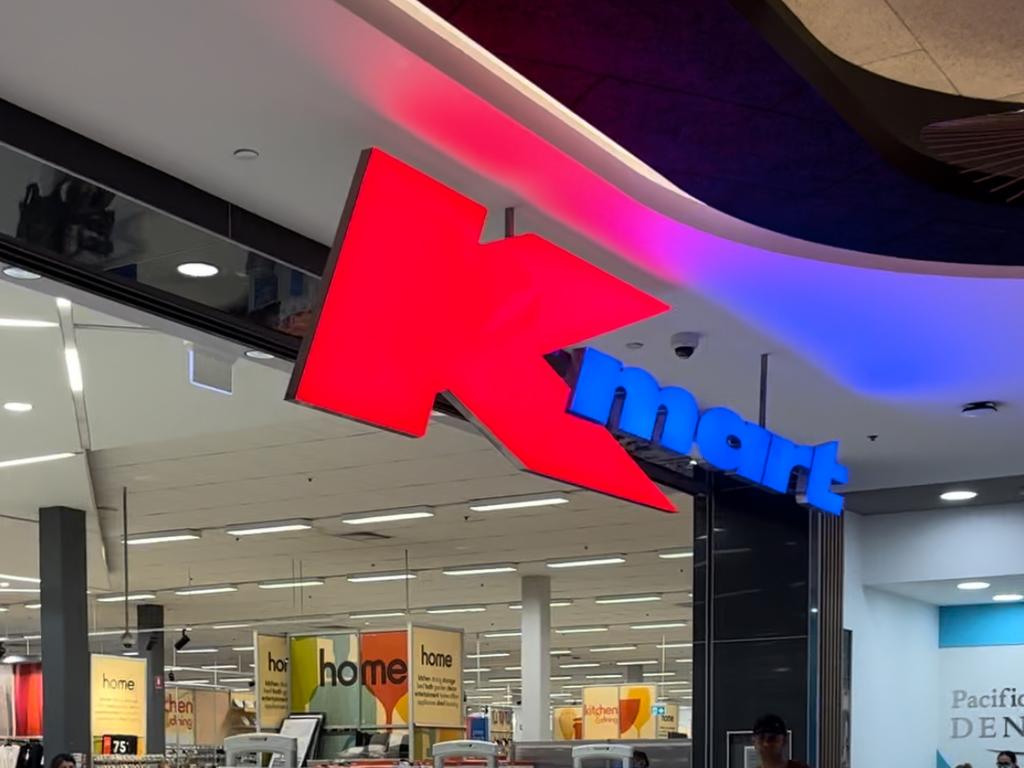Kmart announces its last full-size store in the US is closing its doors
The budget retailer is booming in Australia – but over in the US where the discount brand originated it’s a very different story.
Kmart might be a brand that is booming in Australia, but the US retailer of the same name has just hit a grim milestone after announcing the closure of its last full-size store in America.
The shop, located in a posh New York suburb, is one of just two remaining in a chain that once spanned more than 2000 stores across the country.
However, it will close its doors for good on October 20, leaving behind just one tiny “convenience store” in Miami, Florida, the New York Post reports.
But why is a brand described as a “juggernaut” in Australia reaching the “end of an era” in its origin country?

Kmart in the United States was once a powerhouse brand described as “the destination for bargain shoppers” – which at the height of its popularity brought the discount business model to Australia in 1968.
Founded in Detroit in 1899 as the SS Kresge Company by a hardware salesman named Sebastian Kresge.
It wasn’t until 1962 that the first store with the Kmart name opened in Garden City, Michigan.
The new arm of the business began expanding rapidly, claiming the discount segment of the market that big box stores and online retailers such Walmart and Amazon now dominate.
In 1977, nearly 95 per cent of S.S. Kresge Company sales were generated by Kmart stores, prompting the company officially changed its name to Kmart Corporation, according to CNN.
It’s growth continued, and at its peak, there were over 2000 Kmart stores located across the United States.
“Kmart was part of America,” retail historian Michael Lisicky told the Associated Press in 2022.
“Everybody went to Kmart, whether you liked it or not. They had everything.”

But from the 1990s onwards, the store began to fall out of favour with shoppers, with the first US Kmart store going bust in 2002.
New York’s Columbia University Business School Mark Cohen blames “a series of financial misadventures” for the once beloved store’s eventual demise.
“Back in the heyday, and we’re talking 20-plus years ago, Kmart was the prime mover in US in discount retail,” Prof Cohen told news.com.au previously.
But the chain become complacent, he said. It stopped innovating and its stores – which were well sited when they opened decades before – were now “on the wrong side of the tracks” and had became “sloppy and dirty”, he said.
“(Management) were pontificating about how important and wonderful Kmart was while upstarts like Walmart and then Target left them in their wake.”

In 2005 Kmart was bought out by Sears, but that company too went bankrupt in 2018, leading to the last 202 remaining stores to be bought by the hedge fund ESL Investments, The Independent states.
Since then, all but two Kmart stores in the US have shuttered, but following the announcement that the Bridgehampton store in New York will close before the end of the year, the end seems near.
Back in 1996 when it opened, the Bridgehampton Kmart became the retailer’s “proudest and most productive location”, the New York Post reports.
The store’s local clients had included famous American cook Martha Stewart, though analysts have since noted the Kmart store also did well because the nearest Walmart and Target stores were located more than 32km away.
In recent months, the Bridgehampton Kmart, which spans nearly 90,000 square feet, has become known mainly for empty shelves and lack of customers, the publication added.
The remaining Miami location “pales in comparison” to the storefronts the big-box chain used to operate in its heyday.
The Florida shop is closer in size to a pharmacy or convenience store, according to an August report by the Miami Herald.
However, Kmart has several stores outside the 50 states that will remain open in the US Virgin Islands and Guam, a US island territory in Micronesia, in the Western Pacific, WJAR reported.

In contrast, Kmart in Australia – which has been owned by Wesfarmers since 2007 – is booming, with the company recently merging with Target as part of $10 billion merger that took place at the start of the year.
The first Australian store was opened on 30 April 1969 in Burwood East, a suburb of Melbourne, as part of a joint venture between G.J Coles & Coy Limited (Coles) and the S.S. Kresge Company.
Eventually, the brand became wholly owned by the Coles Myer Group, and later sold onto its current owners, Wesfarmers.
Unlike its US-counterpart, which was famed for its 15-minute-long “blue light specials”, Kmart Australia said it has “built trust” with its budget-savvy consumer and doesn’t depend on the flash sales.
“We recognised that we needed our customers to trust us,” Kmart Australia’s managing director, Ian Bailey, told the Australian Retailers Association in January.
“When they shop with us, we wanted to ensure prices would move from one week to the next. Keep pricing simple. Make everyday living brighter.”
It’s a formula that appears to have worked.
The company now operates around 325 stores across Australia and New Zealand, most recently opening a new store in St Mary’s, in western Sydney just last week.






